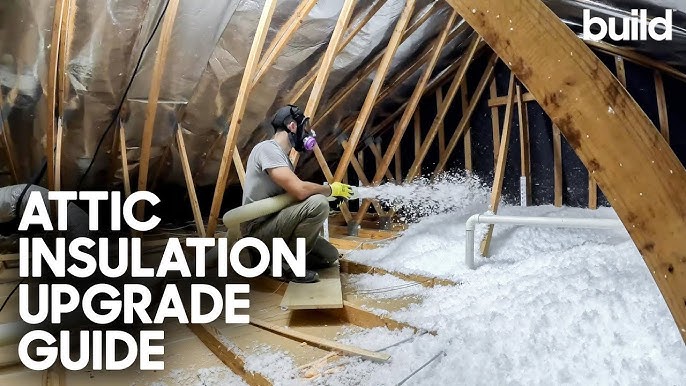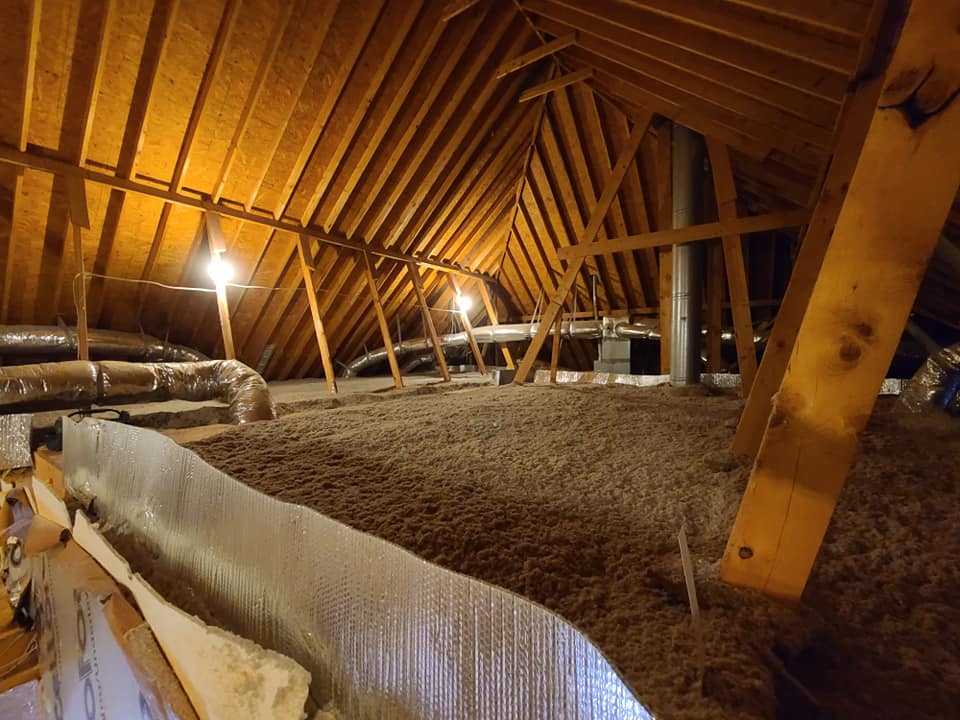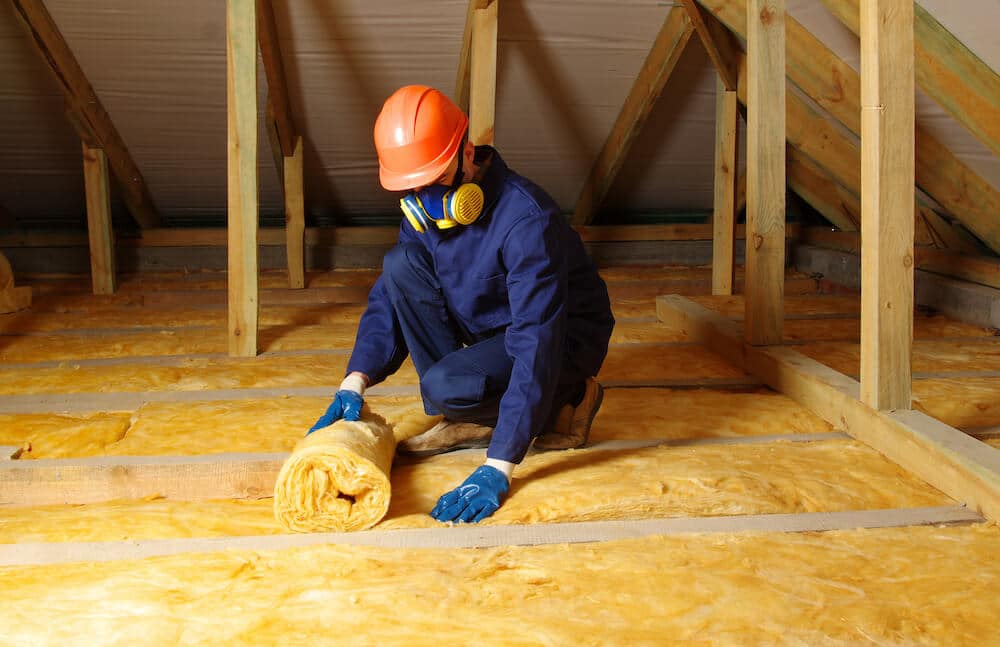Expert Tips for Enhancing Your Home with Attic Insulation DFW
Wiki Article
Discover the Various Kinds Of Attic Insulation and Their Special Benefits for Your Home's Power Efficiency

Fiberglass Insulation
Fiberglass insulation is among the most frequently utilized products for attic room insulation as a result of its superb thermal performance and cost-effectiveness. Composed of tiny glass fibers, this product properly traps air, developing an insulating obstacle that helps preserve consistent indoor temperature levels. Its high R-value per inch makes it specifically efficient at standing up to heat transfer, which is essential for power preservation in homes.
Installation of fiberglass insulation is relatively simple, frequently readily available in batts or loose-fill forms, fitting different attic room configurations. Additionally, it is non-combustible and immune to moisture, lowering the risk of mold development. This longevity adds to its long life, making fiberglass a feasible long-lasting investment for home owners.
Moreover, fiberglass insulation is often manufactured from recycled products, which improves its eco-friendliness. The product can likewise contribute to soundproofing, lessening noise transfer in between rooms. While it is vital to put on safety equipment throughout installment to prevent inflammation from the fibers, the total benefits of fiberglass insulation, consisting of energy financial savings and environmental factors to consider, make it a prominent choice for boosting attic performance and advertising a comfy living environment.
Spray Foam Insulation
Spray foam insulation is an extremely reliable choice for attic insulation, understood for its exceptional air sealing and thermal efficiency. This cutting-edge insulation material is composed of a mixture of isocyanate and polyol resin, which, when incorporated, expands rapidly to fill up gaps and tooth cavities in the attic room area. Its capacity to stick to different surfaces makes sure a continual obstacle against air leaks, dramatically minimizing warm loss throughout colder months and warmth gain during warmer periods.Among the crucial benefits of spray foam insulation is its high R-value per inch, which suggests it offers outstanding thermal resistance in a relatively thin application. This is especially beneficial in attics where area is often limited. Furthermore, spray foam can aid lessen dampness buildup, decreasing the threat of mold and mildew development, which can be detrimental to both the structure and interior air quality.
While the preliminary price of spray foam insulation may be more than traditional options, its long-lasting power financial savings, paired with enhanced comfort and improved home worth, make it a rewarding investment for house owners seeking boosted power performance. Attic Insulation DFW. Overall, spray foam insulation sticks out as a reliable solution for maximizing attic room insulation
Cellulose Insulation

Cellulose insulation is a preferred choice for attic room insulation, largely composed of recycled paper items treated with fire retardants. This environmentally friendly alternative is understood for its outstanding thermal efficiency, properly lowering warmth transfer in both summer season and cold weather. The dense composition of cellulose enables it to fill up voids and spaces in attic room areas, offering a smooth barrier against air leaks.
Among the considerable benefits of cellulose insulation is its capability to stand up you could try here to mold and parasites, owing to the fire retardant therapies made use of during production. Additionally, it boasts a high R-value per inch, which converts into premium energy performance. House owners can expect lower home heating and cooling expenses as an outcome of boosted insulation.
Installation is normally accomplished with blowing loose cellulose right into the desired area, enabling a reliable and fast procedure. This method likewise lessens disruption to the existing structure. Moreover, cellulose insulation has a reasonably low environmental effect, as its manufacturing procedure utilizes recycled materials, adding to sustainable structure techniques.
Rock Woollen Insulation
Amongst the various options for attic insulation, rock wool, likewise called mineral woollen, attracts attention because of its remarkable thermal and acoustic efficiency. Made from recycled or all-natural products, rock wool is produced by melting rock and spinning it into fibers, resulting in a product that offers excellent insulation buildings.Among the substantial benefits of rock wool insulation is its high R-value, which indicates its efficiency in withstanding warm circulation. This particular not only enhances energy performance yet additionally adds to maintaining a comfy interior temperature level year-round. Furthermore, rock woollen is naturally fireproof, making it a much safer choice for homes as it can endure heats without melting or releasing toxic fumes.
Furthermore, rock wool insulation stands out in soundproofing abilities, properly minimizing noise transmission between spaces and from outdoors resources. Generally, rock woollen insulation offers a thorough service for improving power effectiveness, safety and security, and comfort in property setups.
Radiant Barrier Insulation
Radiant obstacle insulation functions as an efficient solution for reducing warm transfer in attic rooms, particularly in warmer climates. This type of insulation jobs by reflecting radiant warmth away from living spaces, consequently reducing the amount of warmth that enters Extra resources a home throughout warm weather - Attic Insulation DFW. Typically composed of a very reflective material, such as aluminum foil, radiant obstacles are mounted in attic rooms, dealing with the roof, where they can obstruct incoming heat from the sunlightThe key advantage of glowing obstacle insulation is its capacity to reduced air conditioning prices. By reflecting heat rather than absorbing it, radiant barriers can help maintain a more steady indoor temperature, minimizing the work on air conditioning systems. This efficiency equates over at this website right into reduced energy expenses and enhanced comfort for house owners.
In enhancement to energy savings, radiant barriers can additionally add to boosted indoor air high quality. By decreasing heat build-up, they aid lessen humidity levels, which can protect against mold and mildew development and improve overall air blood circulation. When mounted appropriately, glowing barrier insulation can be a very useful enhancement to any type of energy-efficient home, making it a deserving consideration for homeowners looking to boost their attic insulation approach.
Conclusion
To conclude, understanding the various sorts of attic insulation-- fiberglass, spray foam, cellulose, rock woollen, and radiant obstacles-- allows house owners to make informed choices relating to energy performance. Each insulation type provides distinct benefits, such as remarkable thermal resistance, moisture monitoring, and sound depletion. By selecting the ideal insulation material, substantial reductions in power expenses can be attained, along with improvements in indoor convenience. Ultimately, the ideal option adds to a more sustainable living atmosphere and promotes general energy preservation.

In verdict, comprehending the various kinds of attic insulation-- fiberglass, spray foam, cellulose, rock wool, and glowing barriers-- enables homeowners to make enlightened decisions regarding power effectiveness.
Report this wiki page